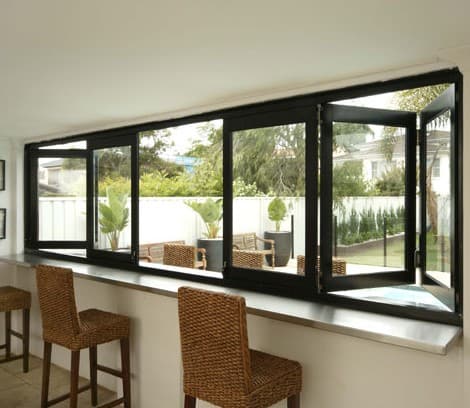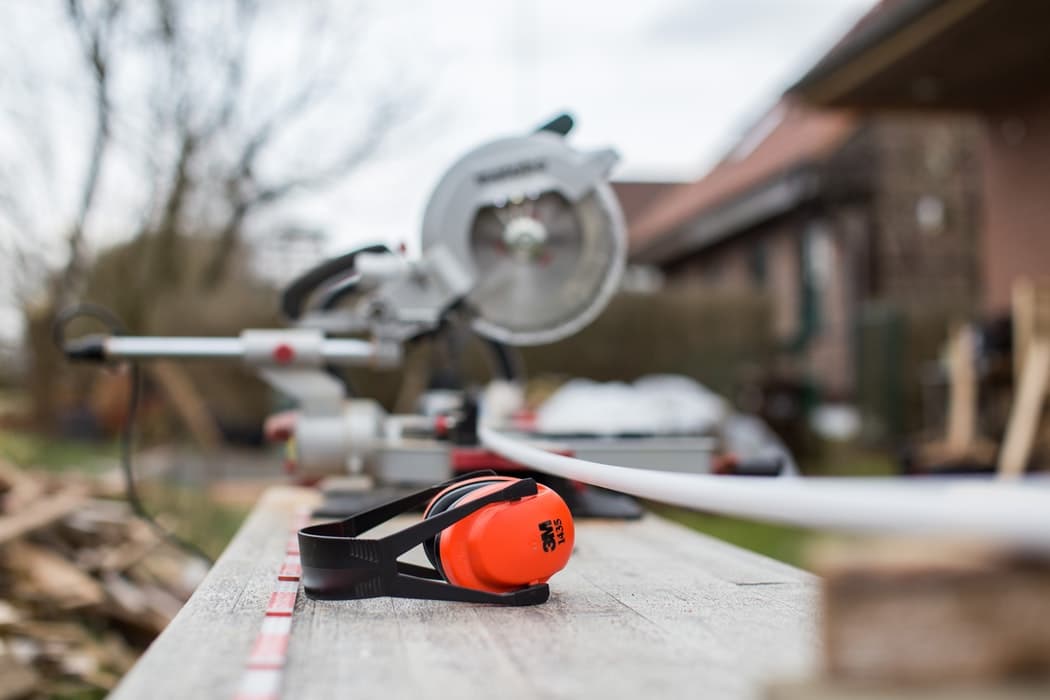
Have you just made the leap and purchased your dream lakefront house or chalet, but you are just lacking an essential element to fully enjoy it? Now, adding a floating dock might just be the idea of the century to bring about a bit more fun to your evenings with your friends and make your family's access to water sports that much easier.
Whether you are the DIY-type or not, there is a lot more to building a dock than just a few planks with floats or barrels if you want it to last more than a summer, and fit the type of shoreline available to you, all the while respecting the environment. Here are the steps to follow to successfully complete this type of project.
Building a Floating Dock
Aside from getting quick access to the water, building a dock will spare you docking fees or storing expenses, as well as increase the value of your property and personalize your shoreline.
Before you head straight to your local hardware store or retailer to put your project in gear, make a list of key factors and requirements needed based on your answers to the following questions:
Are you familiar with local rules and regulations?
Most communities require that the size and materials of your dock be approved, may determine where your dock can be built and may forbid the removal of any surrounding vegetation to limit any damage to the ecosystem. For example, treated wood is sometimes prohibited to avoid contaminating the water.
Likewise, some cities require building permits (just as you would for home renovations) or require an assessment and approval from agencies such as Fisheries and Oceans Canada (DFO). If you happen to spot baby ducks waddling about your shoreline or birds food diving, chances are there is a nesting or spawning area nearby, in which case you need to respect nature and take these into consideration before you plan to build your dock.
What type of dock would best fit your needs?
Start thinking about how you want to use it. Do the kids just want to jump off the side for a swim and do you just want to chill with a book and a glass of wine? The size and shape of the dock will then be different if your goal is to dock windsurfing equipment and a few WaveRunners. If so, think about the number and size of the water toys that will need to be pulled out of the water or docked to figure out if an I, T, L or U shape dock is best.
And, how many people will be hanging out on the dock at once? This will help you determine both the size of your dock and the number of floatation devices needed.
What is your budget like?
Are you going to build, install, and maintain the dock yourself or are you going to rely on the services of qualified professionals? Do you want to use high-quality or basic materials, new or salvaged...
What type of dock is best for your specific setting?
First and foremost, check your property plans to make sure you are not building a dock that is slightly outside of your property line and thus giving your neighbour an unplanned (and expensive!) gift.
Next, if you want your dock to last, consider the environment. Does the water level fluctuate a lot, will it be in an area where boats are used or a windswept spot with a lot of waves? Is it deep? Is the shoreline and lake bed made of rocks, sand, mud, etc.? For instance, a sandy, fairly even lake bed is suitable for almost any type of dock, even prefabricated docks. On the other hand, a rocky base with a significant change in level will make it more difficult.
Regardless of how skilled and detail-oriented you are, you may want to seek help and a professional opinion when designing and installing your peaceful, outdoor oasis.
Floating Docks

Photo: Pixabay
The removable, floating dock is rather simple to build and affordable, compared to a fixed or semi-floating dock. While practical because it adjusts itself according to the depth of the lake, river, or body of water, which fluctuates during the year, it is not the ideal solution to build on waters with 3-foot waves. If the ice level allows it, you can leave your dock in place all year round, even if it has the benefit of being removed and put away for the winter.
Materials Used to Build a Floating Dock
When you draft your plans, consider enough space for two people to comfortably walk side-by-side.
Hardware store
The preferred material for fittings is hot-dip galvanized steel to ensure maximum corrosion resistance. Stainless steel is slightly more affordable, although it does not have the same long-term durability.
In order to build a dock that will last for generations to come, choosing top-quality materials is always advisable (especially since some materials will be in constant contact with water, such as fittings, corner braces, hinges, nuts, bolts, screws, and removable ladder).
Anchor
If your dock is not fixed, therefore without pilings, you will need an anchor system (cement blocks, ties, and chain) to maximize stability at the end of the dock and every 30 feet. Depending on the depth and roughness of the water, between 500 and 1,500 pounds (227 to 682 kilos) of anchor blocks will be required.
Consider the overall dock as a potential swim platform and boat dock to determine the ideal position of the cement block(s) underneath the surface, otherwise, you risk damaging the boat's hull or hurting yourself when jumping or diving off.
Dock finish
Standard prefabricated docks are usually made of aluminum and plastic.
On the flip side, if you want to build your own dock, there are a couple of options available to you, some of which you should definitely consider, like cedar, aluminum, and PVC, these are great in terms of durability, and resistance. Other wood types that offer reasonable durability include cedar, redwood, and cypress.
Since using paint and stain to preserve wood is not going to do you any good, consider getting the right type of wood and letting it naturally turn gray. After all, applied treatments will fade or flake off due to the inherent nature of the finish. Besides diminishing the natural beauty of your dock, paint debris could also be toxic to wildlife.
Floatation device
The easiest, but not cheapest, number one option is to get floats made specifically for docks directly from a retailer. To find out how many you will need, use their online calculator or calculate it as such:
Length x width of dock x 25 (25lbs of buoyancy per square foot) ÷ buoyancy of chosen float = round up to nearest even number
For example, if you choose a float that can hold 370 pounds: 8' x 12' x 25 = 2400 ÷ 370 = 6.5 so 8. You need to buy 8, model 370 floats to fit under your 96-square feet dock.
The other option is geared towards those who are fans of recycling or traditional methods that recall childhood. That means checking out websites dedicated to selling used items (such as Kijiji, Marketplace, etc.) or enlisting the help of local recyclers to find those trusty blue or grey barrels.
These 45-gallon (205-litre) rigid plastic drums with twist-off caps run between $5 and $20 each, compared to a new float, which runs at about $90 to $200. If you like that idea, you should consider fitting as many barrels as possible behind the dock's formwork beams so that it does not move with the slightest movement, and you should seal the caps using bathroom silicone before screwing them on.
Different Types of Docks

Photo: Unsplash - Richard Parej
Fixed, permanent docks (shown above) are ideal for shallow waters with no major seasonal changes. However, they are not suited for the following conditions: lakes that dry out or for rivers that experience a significant seasonal drop in water level.
However, to put in pilings or tubular supports, heavy machinery is usually required, possibly an excavator, so this is not a DIY project that can you can tackle in your garage, and it is possible that your municipality might not allow you to go forth with it because of the environmental impact. The same is true with crib docks (a large wooden box filled with rocks under the tip of the dock) or those with concrete piers.
However, there are docks that are more distinctive, extravagant, or even downright stunning, such as a cantilever dock or a suspended dock. Of course, their prices reflect their appearance; stunning.
The semi-floating dock (see below) very much matches the information provided in this article, and therefore the one that might appeal most to you. It features a floating component at the end, as well as a fixed, bridge-like component to allow for a smooth transition between land and water levels.

Photo: Pexels - Alexander Zvir
Get 3 renovation quotes for your project with a general contractor
RenoQuotes.com can help you get quotes from a general contractor. By submitting your project, we’ll put you in contact with top-rated contractors. Fill in the form on the homepage (it only takes a few minutes), and you will get estimates from trusted professionals.
Dial 1-844 828-1588 to speak with one of our customer service representatives.
Looking for something else?
Related articles
The latest industry news, interviews, technologies, and resources.

Cynthia Pigeon
•07 Nov 2023
While painting a wall may seem like a rather simple thing to do, it is nonetheless easy to overlook a few basic rules and end up with a botched final outcome. In order to avoid this, here is a list of common mistakes to avoid when painting.

Editorial Team
•28 Nov 2023
The changing seasons often inspire a sense of renewal in your home. And guess what? The bedroom is almost always the favourite room to overhaul. However, designing said room will largely depend on its dimensions, the size of the furniture, and that of the windows.

Cynthia Pigeon
•05 Dec 2025
Have you ever just taken a minute to look outside and admire the cityscape? Keeping an eye on your kids while they play outside or simply noticing the fresh layer of snow that has covered the streets overnight?
Léa Plourde-Archer
•05 Dec 2025
If you've ended up here, you’re probably starting a major bathroom renovation project. Renovating a bathroom from top to bottom is a project that involves several stages and can easily be spread out over several weeks.

Léa Plourde-Archer
•07 Nov 2023
Relationships between neighbours can be affected when a punctual event starts to disturb the usual tranquil atmosphere. Oftentimes, home renovation projects can be one of the events that serve as a trigger to provoke conflicts. Fortunately, this is a situation that can easily be resolved by conducting a fair and balanced discussion between the involved parties. However, in some rare cases, things may unravel and cause real problems.